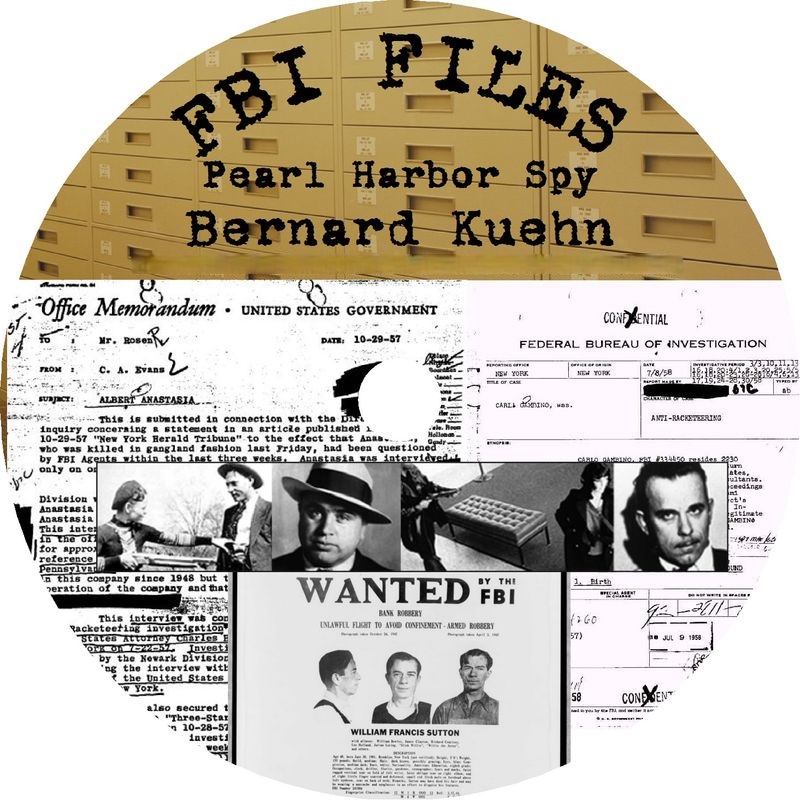
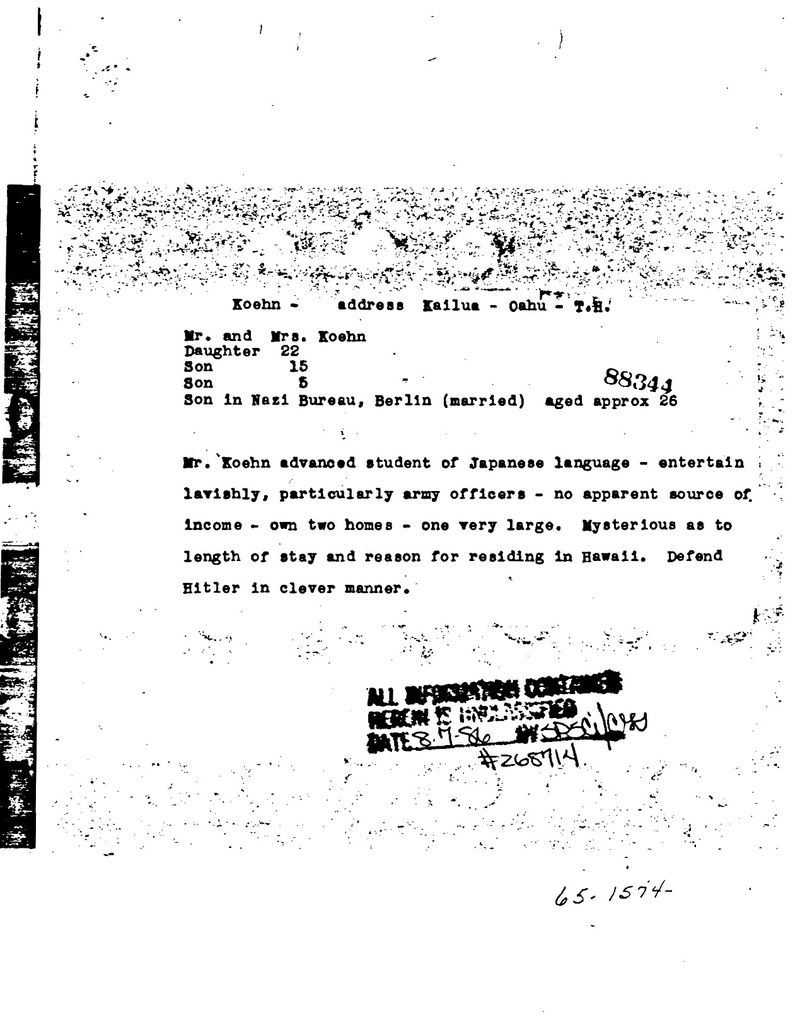
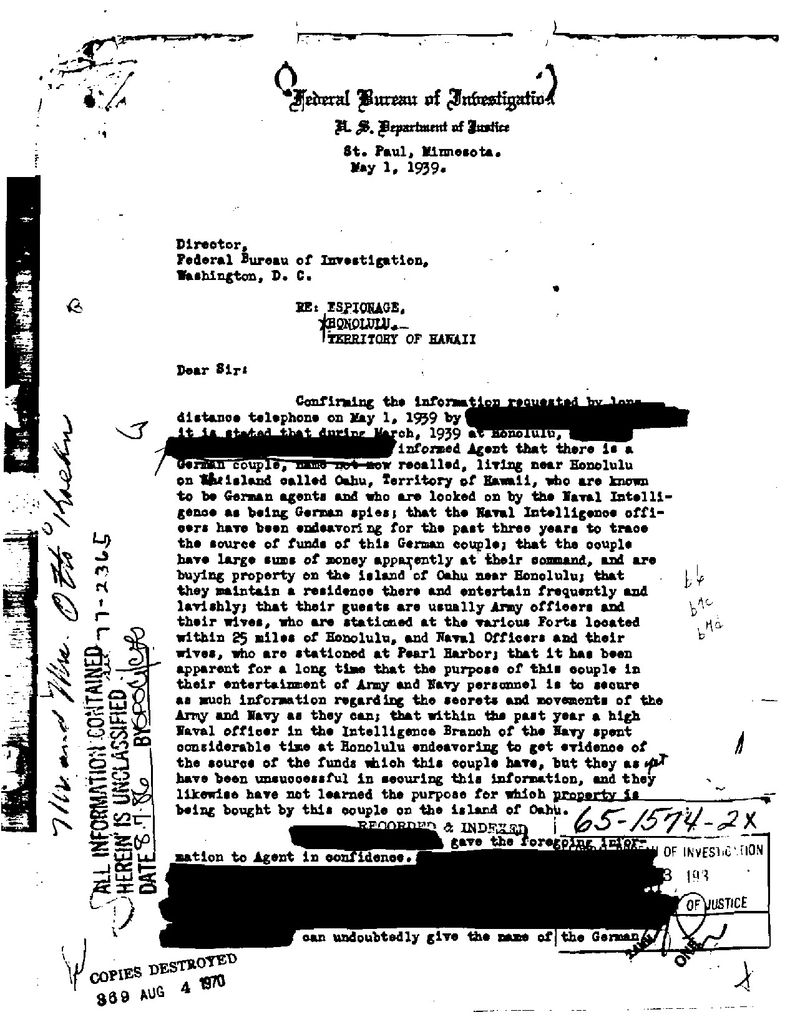



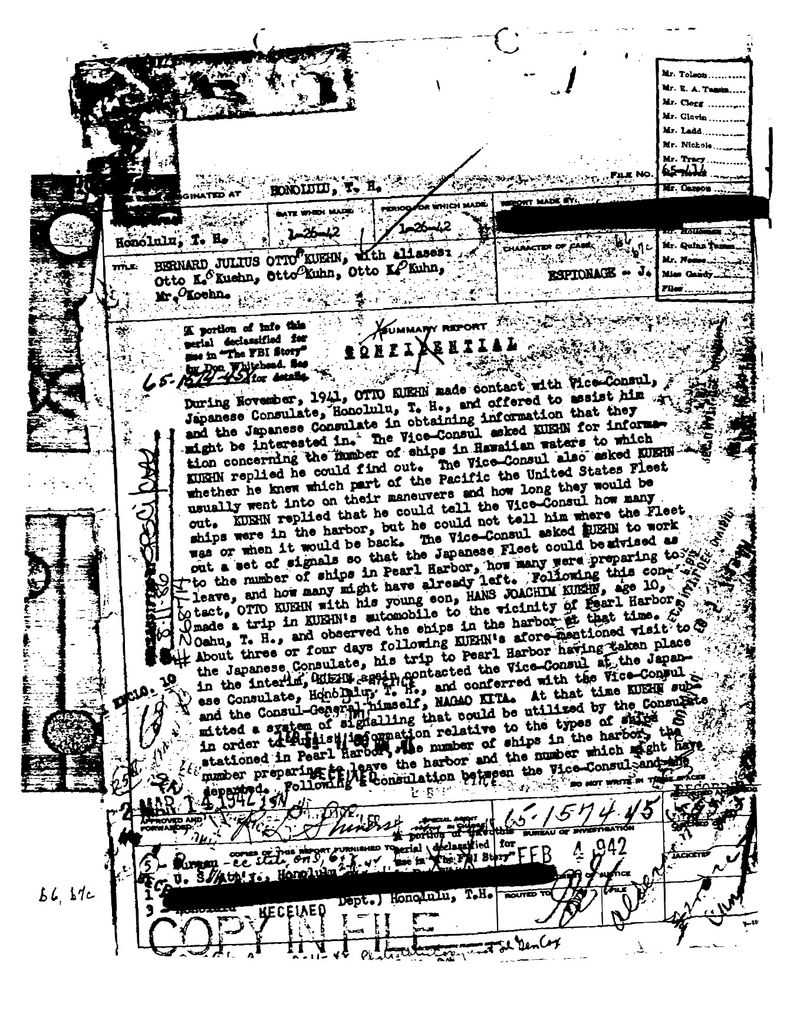
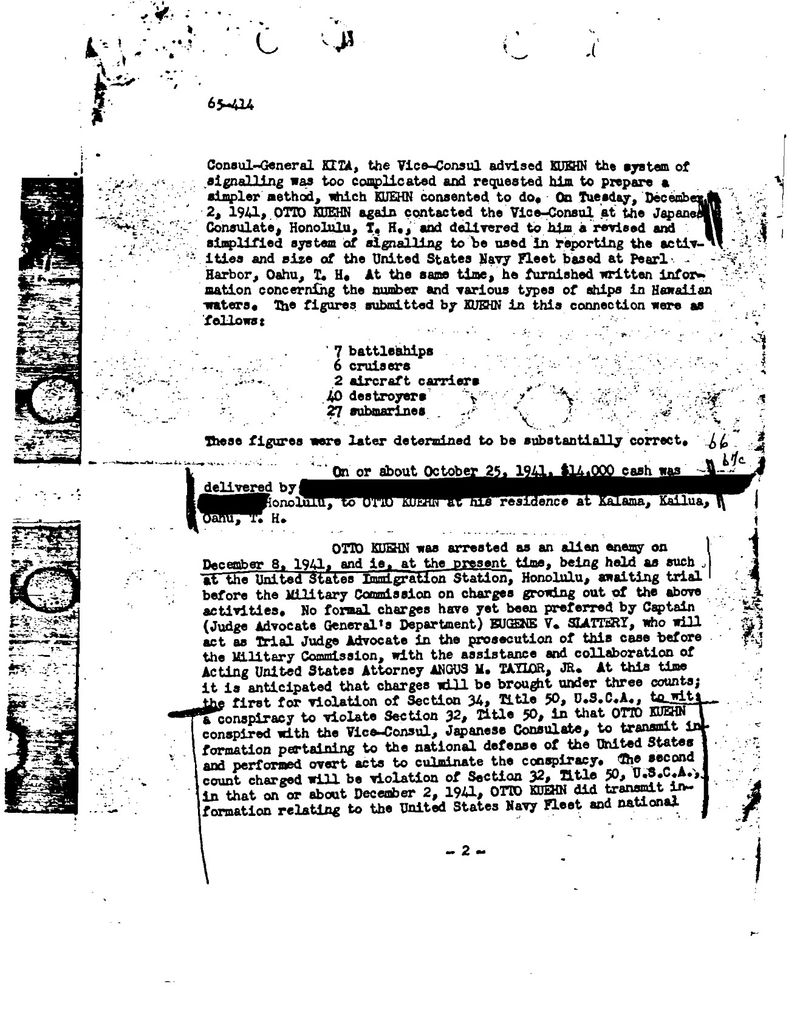
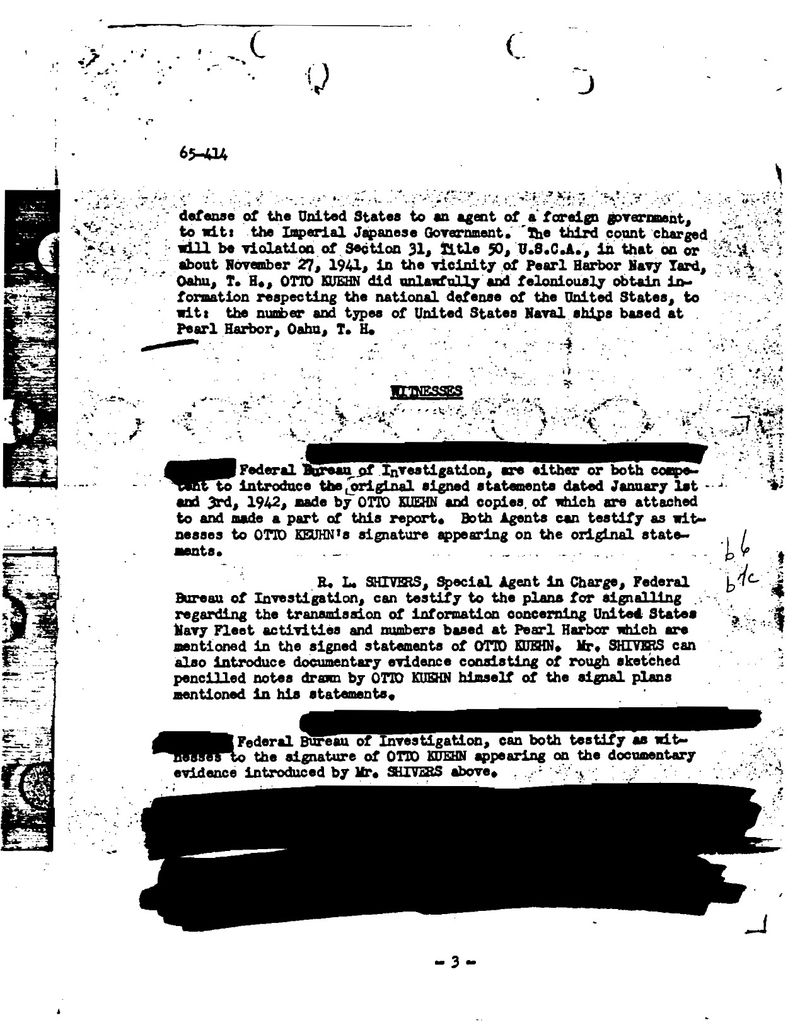
World War II: Pearl Harbor Spy Bernard Kuehn FBI File
$19.50
Description
Bernard Kuehn: Pearl Harbor Spy
Timeline of Events:
- August 15, 1935: Bernard Kuehn moves to Honolulu, Hawaii with his family.
- 1934: The FBI office in Hawaii is closed.
- 1937: The FBI office in Hawaii reopens
- 1938: The FBI office in Hawaii closes again
- February 11, 1939: An FBI memo, sent to J. Edgar Hoover, describes Bernard Kuehn as suspicious, noting his fluency in Japanese, lavish lifestyle with no apparent income, and pro-Hitler views. The memo also notes the lack of a Special Agent in Charge in Hawaii at the time.
- August 1939: The FBI bureau in Hawaii reopens and remains open, under the leadership of Special Agent in Charge Robert L. Shivers. Shivers begins investigating possible Japanese spies in Hawaii.
- Pre-November 1941: Bernard Kuehn is offered a job by Nazi Propaganda Minister Joseph Goebbels to work for Japanese intelligence in Hawaii.
- November 1941: Kuehn offers to provide intelligence on U.S. warships in Hawaiian waters to the Japanese consulate.
- December 2, 1941: Kuehn provides a report with specific and accurate details on the U.S. fleet to the Japanese consulate.
- December 7, 1941: The Japanese attack Pearl Harbor.
- Post-Pearl Harbor: Captured Japanese documents mention a set of signals that match Kuehn’s system.
- Post-Pearl Harbor: Bernard Kuehn is arrested, he confesses but denies sending coded signals.
- February 21, 1942: Bernard Kuehn is found guilty by a military tribunal of spying and sentenced to be shot by musketry.
- Post-February 21, 1942: Kuehn’s sentence is reduced to 50 years of hard labor after he provides information about Japanese and German spy networks.
- Post-World War II: Bernard Kuehn is deported to Germany.
Cast of Characters:
- Bernard Julius Otto Kuehn: The central figure, a German national and Nazi party member who acted as a spy for the Japanese in Hawaii before and during the attack on Pearl Harbor. He was an “advanced student of Japanese language” and entertained U.S. Army officers, yet had no apparent source of income. He set up a system of signals to relay information to Japanese submarines. He was initially sentenced to death, but his sentence was reduced to 50 years.
- J. Edgar Hoover: The Director of the FBI. He received the initial memo in 1939 raising suspicions about Kuehn.
- Robert L. Shivers: Special Agent in Charge of the FBI bureau in Hawaii starting in August 1939. He initiated the investigation into potential Japanese spies in Hawaii, including Bernard Kuehn.
- Joseph Goebbels: Nazi Propaganda Minister, who offered Kuehn a job working for Japanese intelligence in Hawaii.
World War II: Pearl Harbor Spy Bernard Kuehn FBI File
The Federal Bureau of Investigation (FBI) has a 777-page file on Bernard Julius Otto Kuehn, who was convicted of spying at Pearl Harbor. This file is identified as number 65-1574.
The earliest record of the FBI’s interest in Kuehn is a memo dated February 11, 1939, sent to J. Edgar Hoover. This memo described Kuehn as someone who was fluent in Japanese, hosted extravagant parties, especially for military personnel, had no clear employment, owned two properties, including a large one, and whose reasons for living in Hawaii were unclear. He also defended Hitler in a subtle way. The memo also noted the absence of a Special Agent in Charge for the FBI in Hawaii at that time.
The FBI’s Hawaii office was initially shut down in 1934, reopened in 1937, and then closed again in 1938. It was permanently reopened in August 1939, with Robert L. Shivers as the Special Agent in Charge. Shivers immediately began looking into the possibility of Japanese spies operating in Hawaii.
The FBI quickly became suspicious of Kuehn due to his questionable connections with both German and Japanese individuals. He had also hosted U.S. military officers and shown interest in their activities. Despite owning two homes in Hawaii, he had no apparent source of income. Although the FBI and the Army investigated him, they could not find conclusive evidence of his espionage activities. Joseph Goebbels, the Nazi Propaganda Minister, recruited Nazi party member Bernard Kuehn to work for Japanese intelligence in Hawaii. Kuehn relocated to Honolulu with his family on August 15, 1935. In November 1941, Kuehn proposed to the Japanese consulate in Hawaii that he would share information about American warships in the area. On December 2, 1941, Kuehn gave the Japanese consulate a report containing precise and detailed information about the U.S. fleet.
Kuehn created a sophisticated system of signals to transmit information to nearby Japanese submarines. This system included bed sheets on clotheslines, lights in dormer windows, car headlights, and a boat with a star on its sail.
For instance, one of the eight signals Kuehn established was a light shining in his Oahu home’s dormer window between 9 and 10 p.m., which indicated that U.S. aircraft carriers had departed. Another signal was a linen sheet displayed on a clothesline at his Lanikai beach home between 10 and 11 a.m., which meant the battle force had left the harbor.
Following the Pearl Harbor bombing, captured Japanese documents referred to Kuehn’s signal system. These clues led to Kuehn’s arrest. Although he confessed, he denied ever sending coded signals.
On February 21, 1942, 76 days after the Pearl Harbor attack, a military court found Bernard Kuehn guilty of espionage and initially sentenced him to death by firing squad in Honolulu. His sentence was later reduced to 50 years of hard labor after he provided details about Japanese and German spy networks. After World War II, Kuehn was deported to Germany.
Related products
-
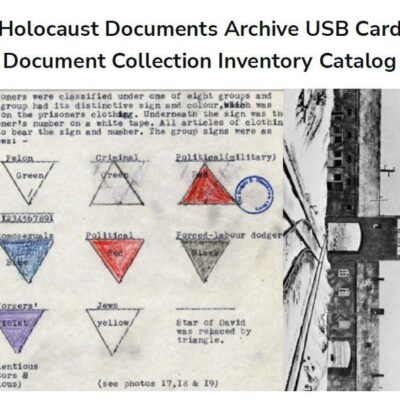
Holocaust Document Archive PDF file – Inventory Catalog of Document Collection
$3.94 Add to Cart -
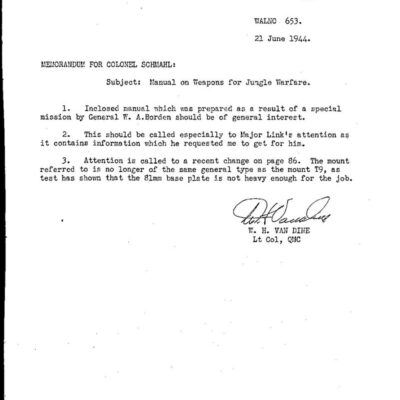
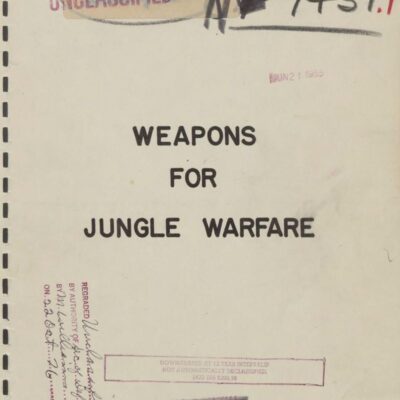
World War II Manual on Weapons for Jungle Warfare (1944)
$1.99 Add to Cart -
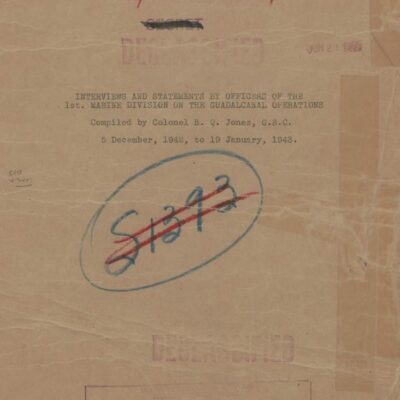
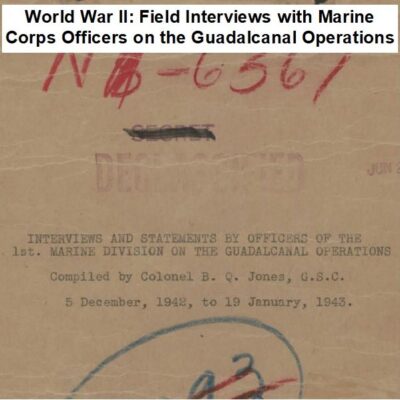
World War II: Marine Corps Officer Interviews on Guadalcanal Operations
$3.94 Add to Cart -
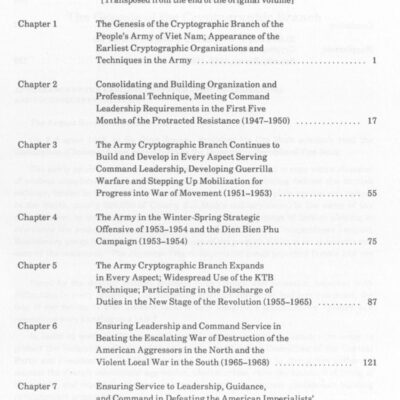
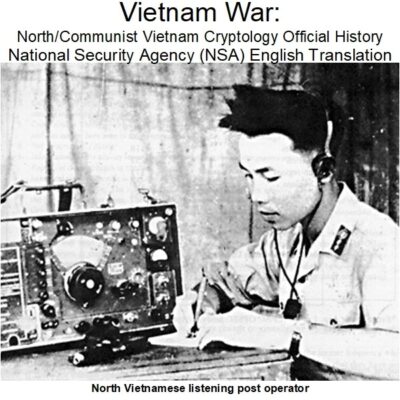
Vietnam War: Cryptology in North Vietnam – NSA Official History
$4.90 Add to Cart